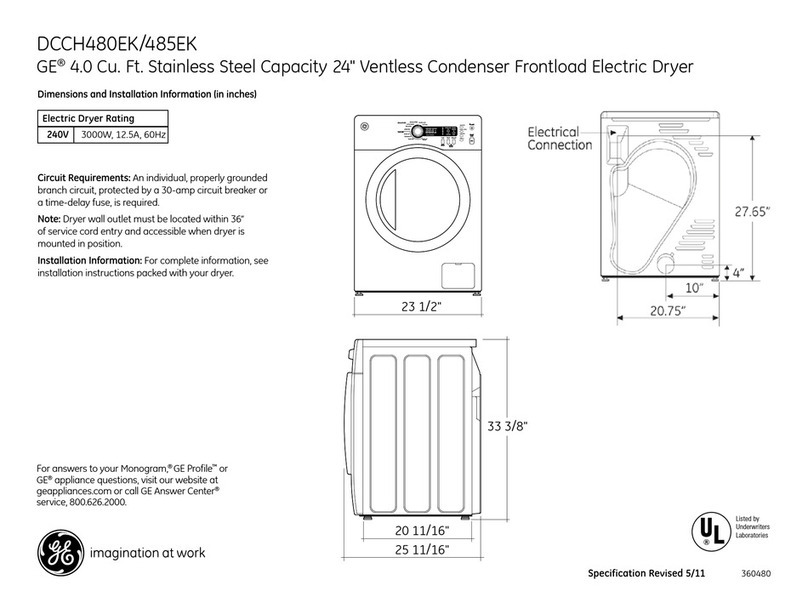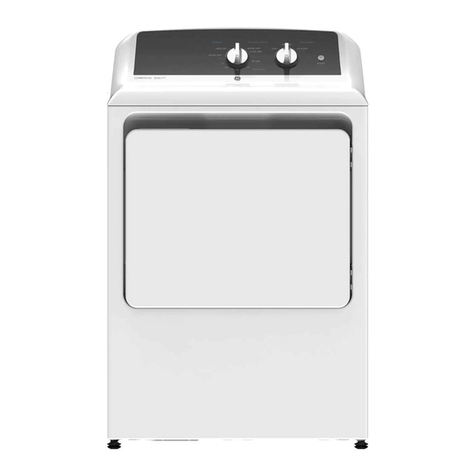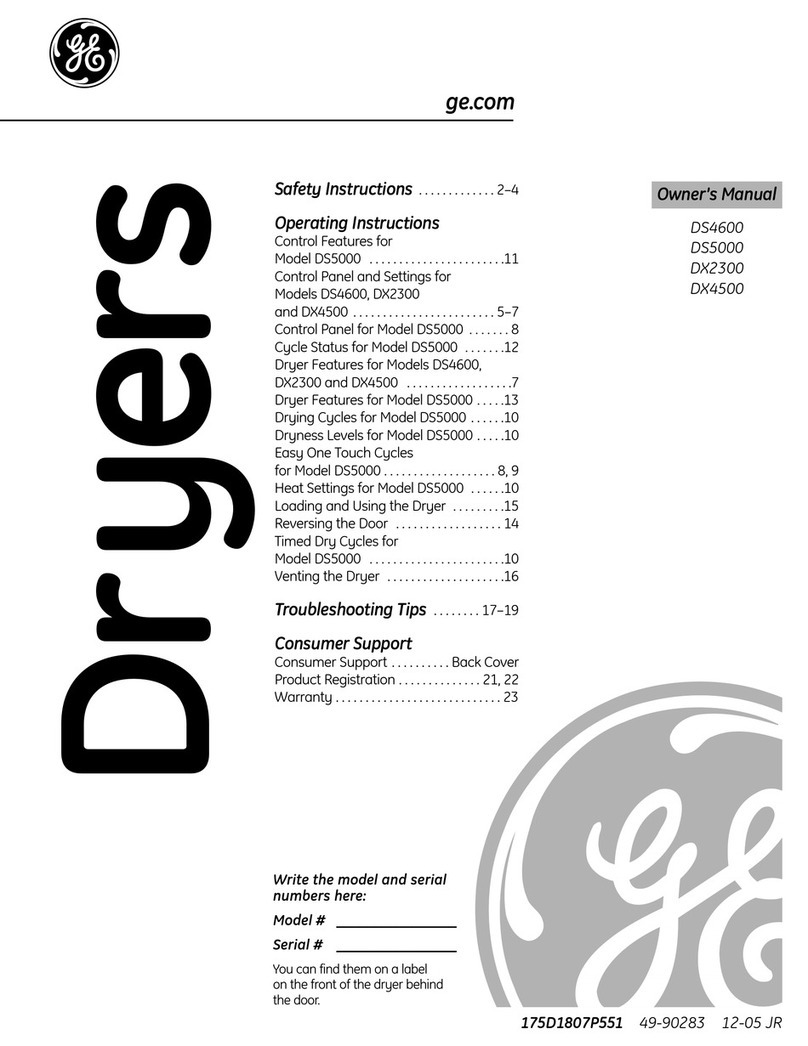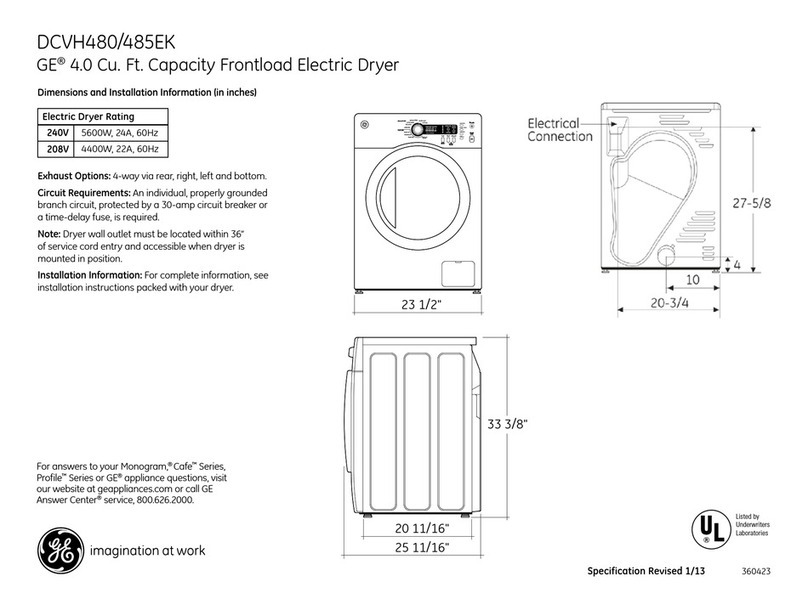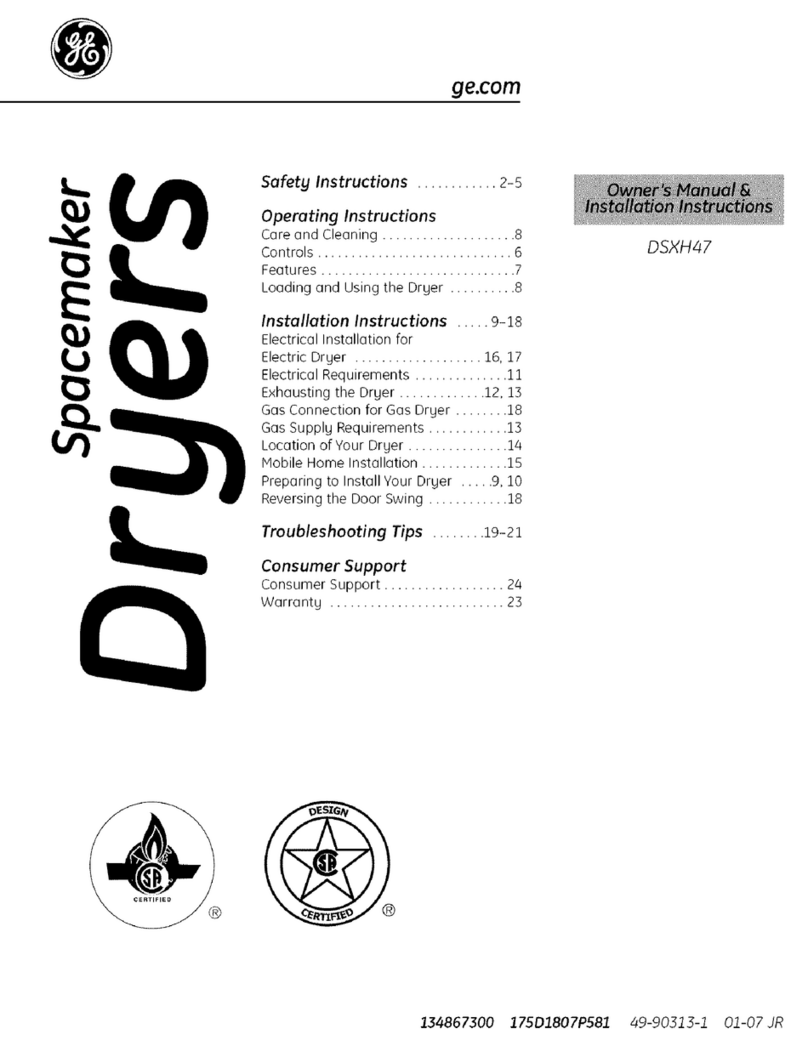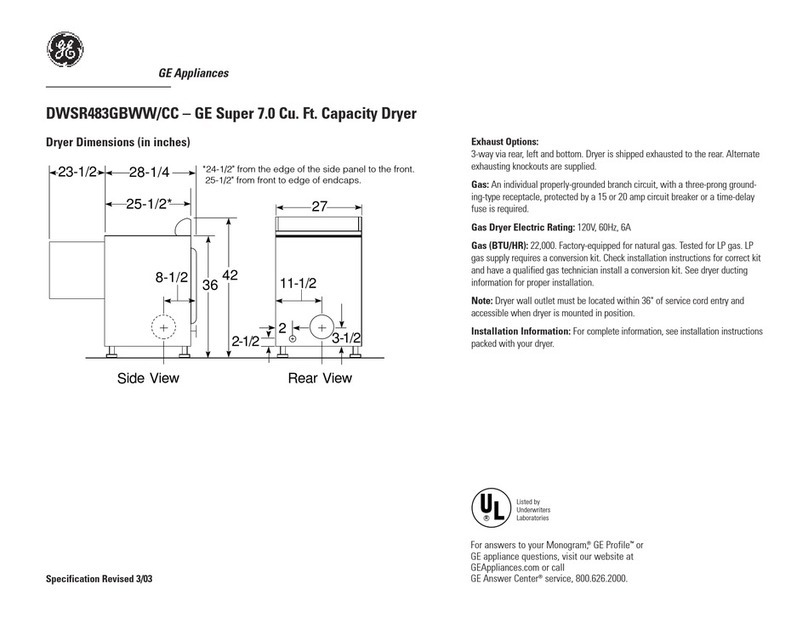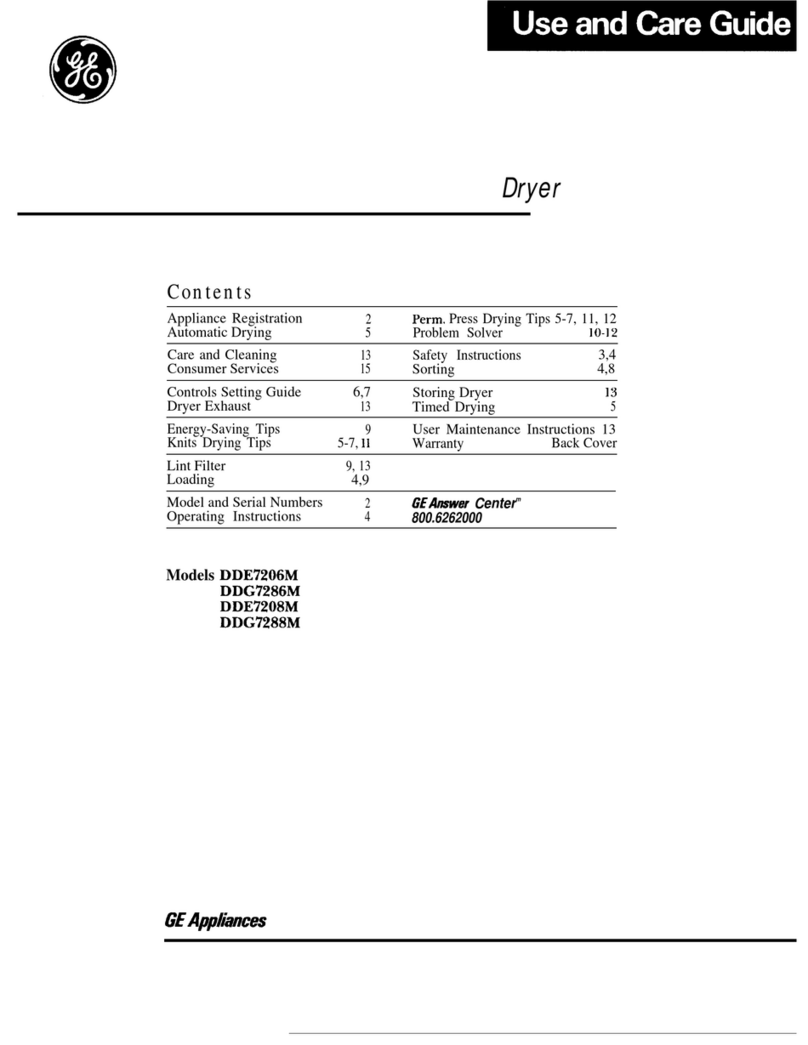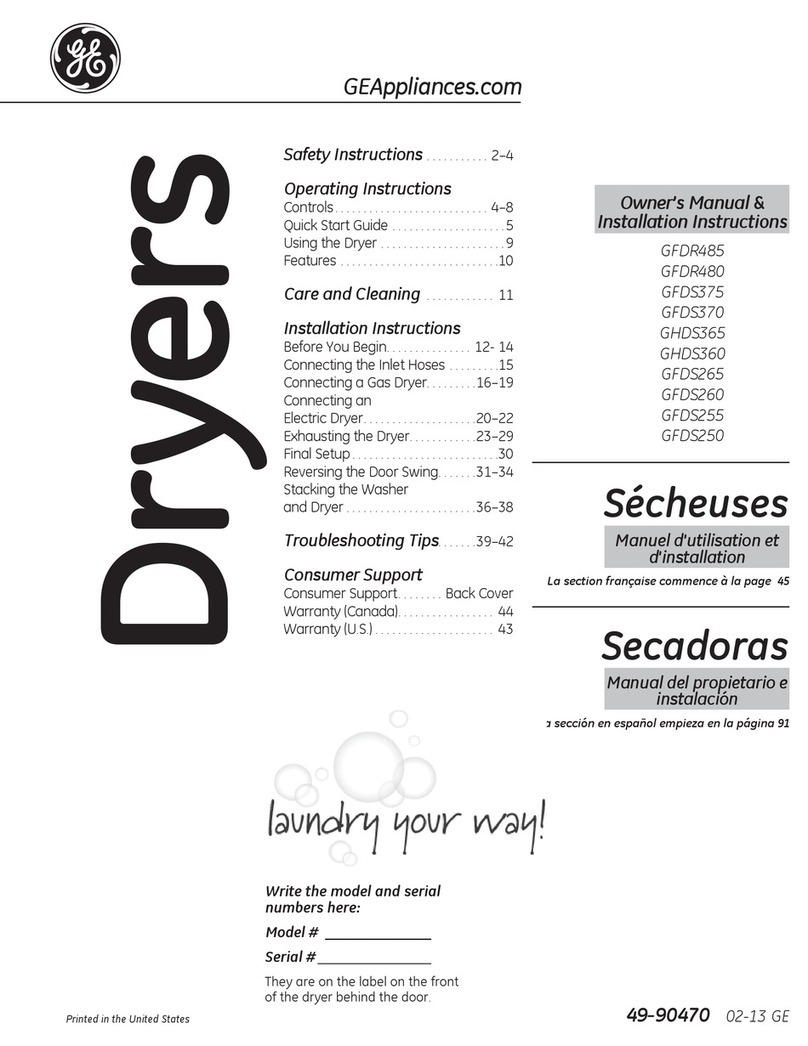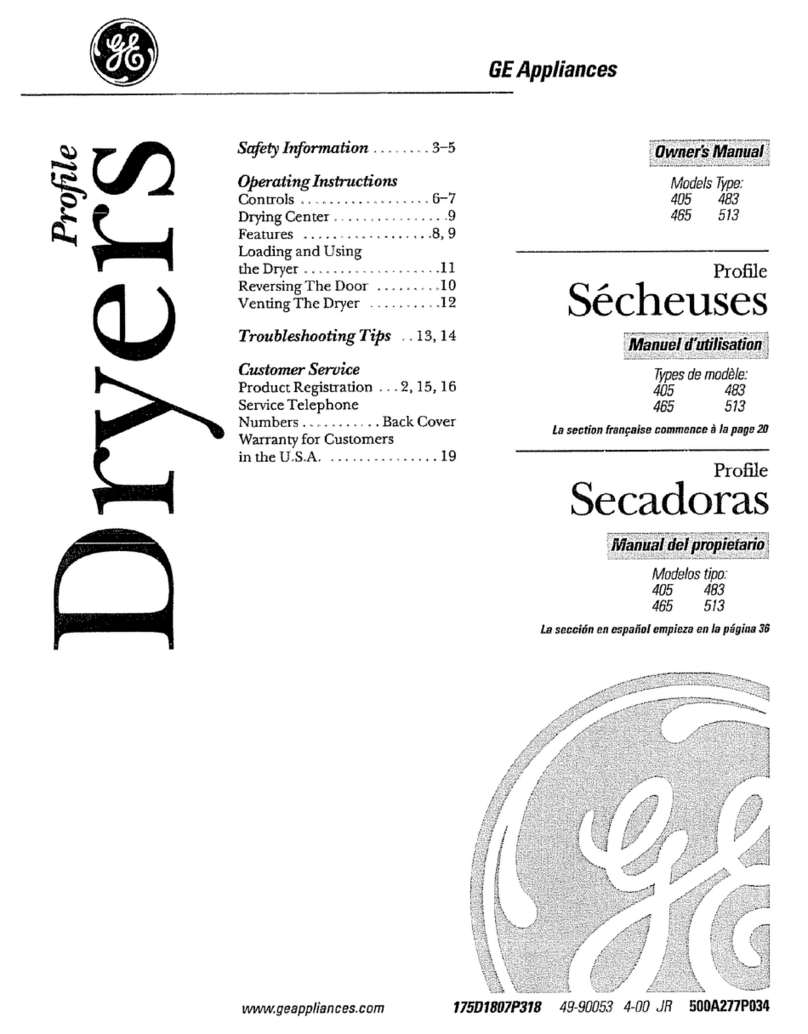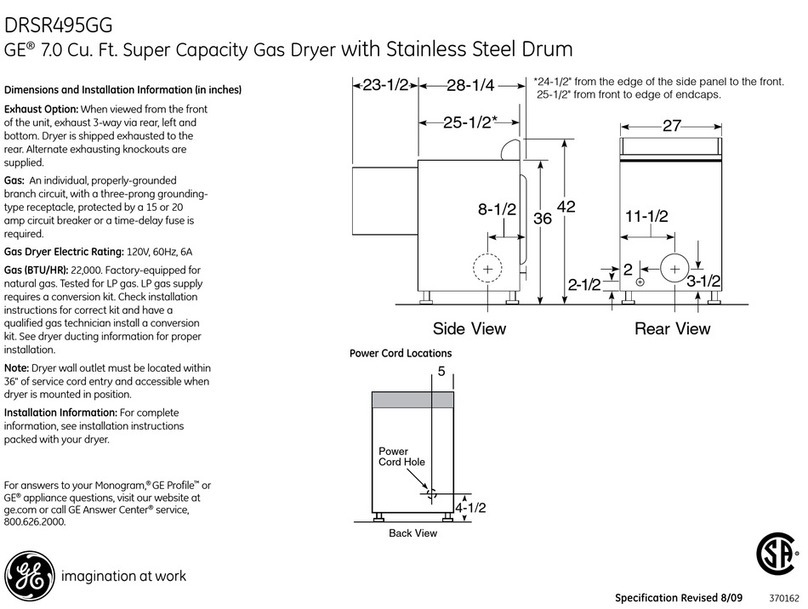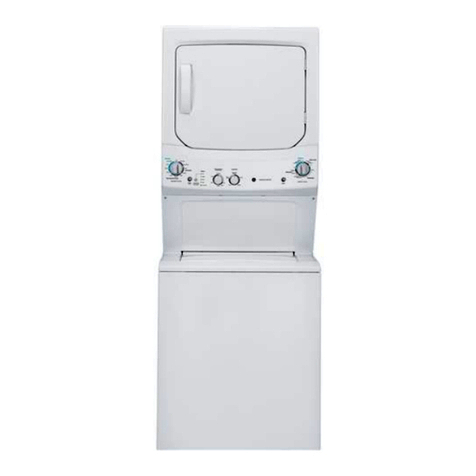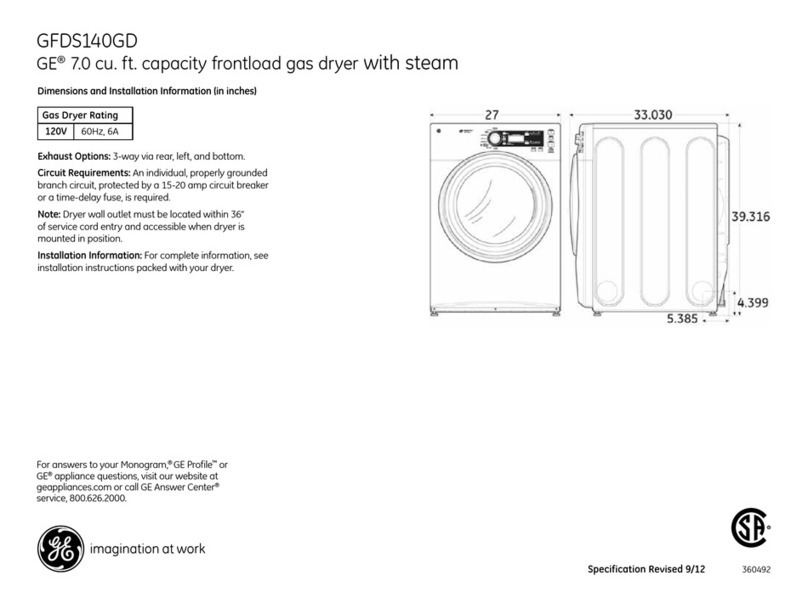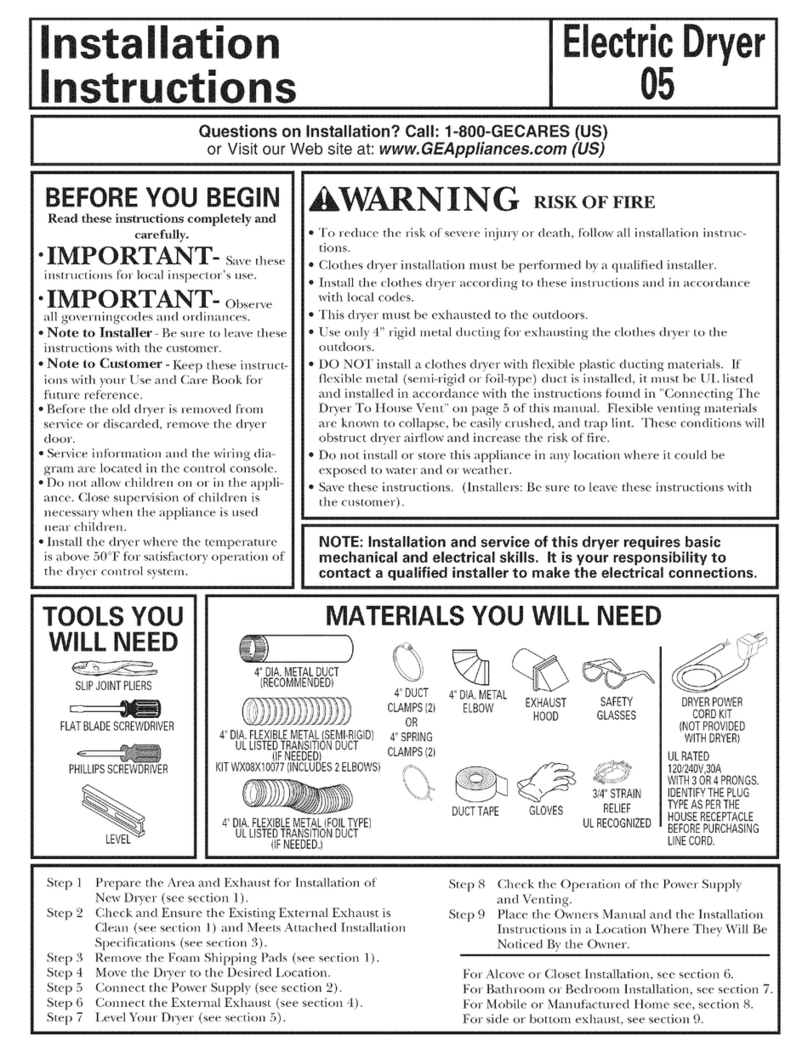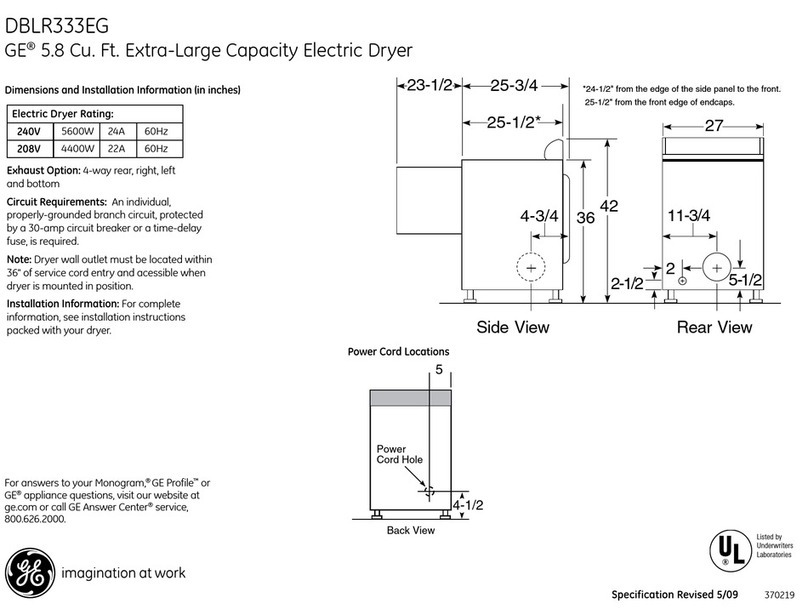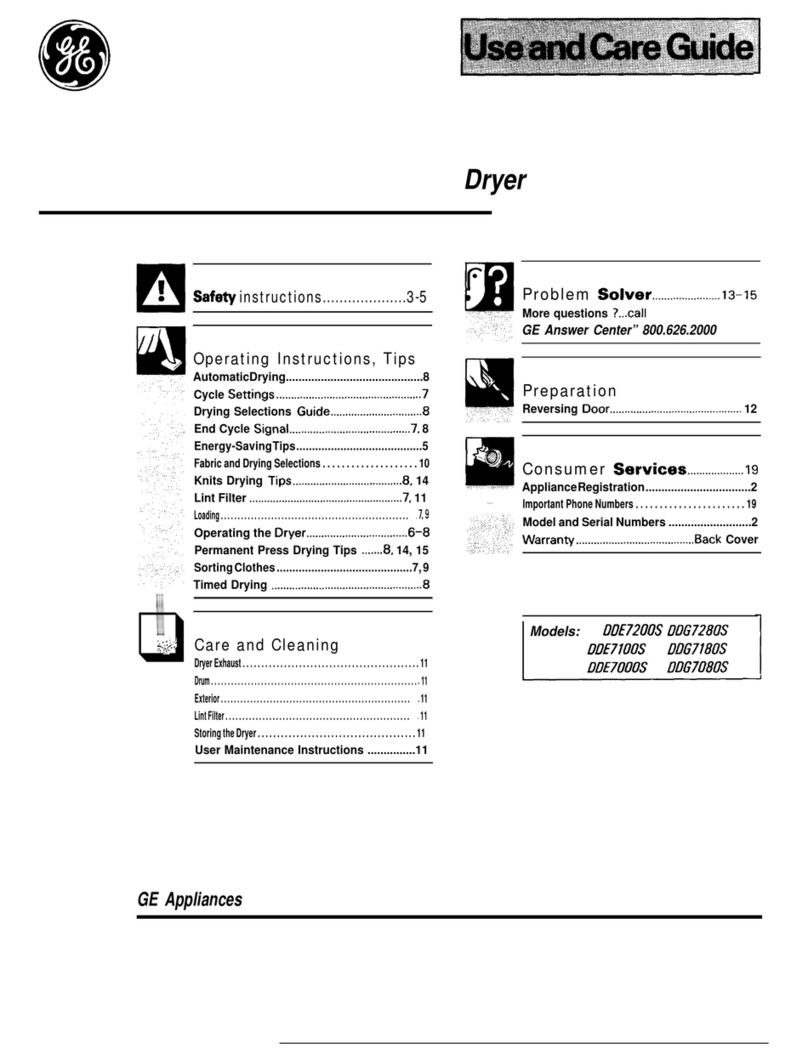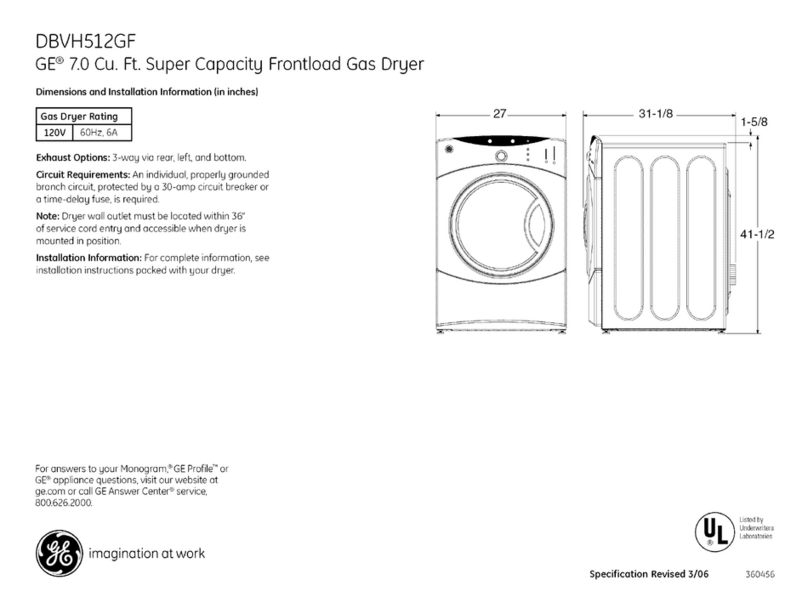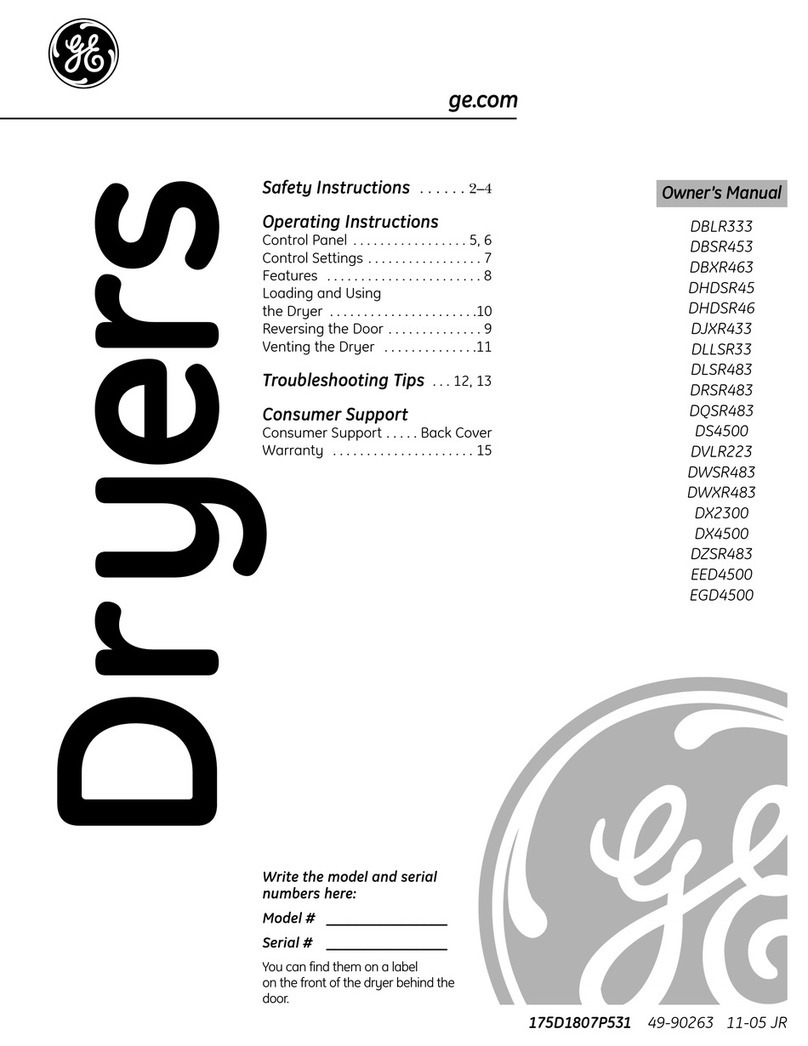●
Clean the lint filter before
each load to prevent lint
accumulation inside the
d~er
or in the room. DO
NOT
OPEWTE
THE
DR~R
~HOUT
THE
~NT
FILTER
~
PMCE.
. Keep
tie
area around and
underneath your appliances
free from the accumulation
of combustible materials,
such as lint, paper, rags,
chemicals, etc.
c
The interior of the machine
and the exhaust duct
connection inside the
dyer
should be cleaned periodically
by a qual~led individual.
●
Never reach into the
d~er
while the drum is moving.
Before loading, unloading or
adding clothes, wait until the
drum has completely stopped.
. Do not
d~
fiberglass articles
in your
d~er.
Skin irritation
could result from the remaining
glass particles that may be picked
up by clothing during subs~
quent
d~er
uses.
@
The
laund~
process can
reduce the flame
remrdanq
of fabrics. To avoid such a
result, the garment maufacturer’s
care instructions should be
followed
ve~
carefully.
● Close supetision is necessa~
if this appliance is used by or
near children. Do not allow
children to play inside, on,
or with this appliance or any
discarded appliance. Dispose
of discarded appliances and
shipping or packing materials
properly. Before discarding
a
dqer,
or removing from service,
remove the door of the
d~er
compartment.
s
Keep all
laund~
aids (such
*detergents, bleaches, fabric
softeners, etc.) out of the reach
of children, preferably in a
locked cabinet. Observe all
warnings on container labels
to avoid personal
inju~.
Keep the floor around your
appliances clean and
d~
to
reduce the possibility
of
slipping.
●
s
To minimize the
possibili~
of electric shock, unplug this
appliance from the power supply
or disconnect the
dyer
at the
household distribution panel by
removing the fuse or switching
off the circuit breaker before
attempting any maintenance or
cleaning (except the removal and
cleaning of the lint filter).
NO~:
Turning the
~cle
Selector knob to an OFF
position does NOT
disconnect the appliance
from the power supply.
.-
6






